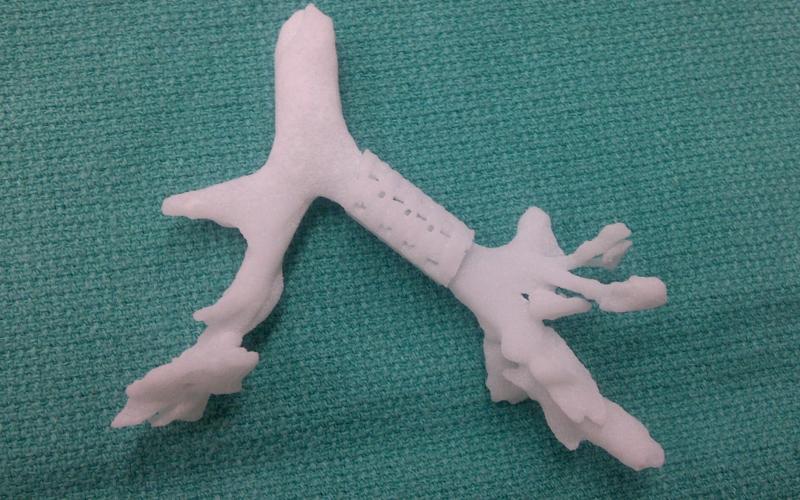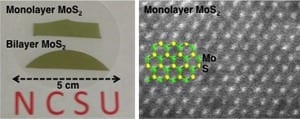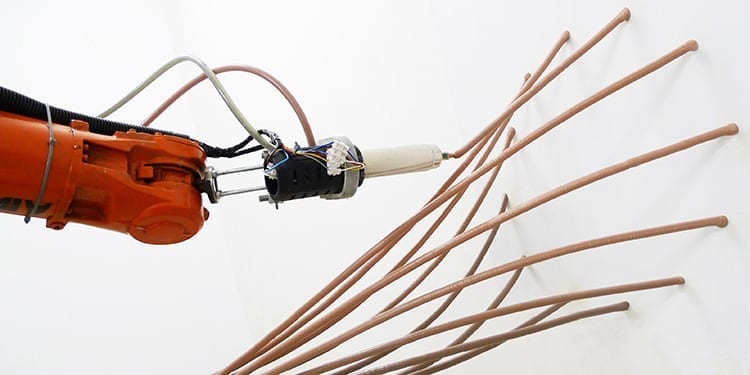
Bioresorbable splint used for first time, successfully stopped life-threatening tracheobronchomalacia, case featured in New England Journal of Medicine
Every day, their baby stopped breathing, his collapsed bronchus blocking the crucial flow of air to his lungs. April and Bryan Gionfriddo watched helplessly, just praying that somehow the dire predictions weren’t true.
“Quite a few doctors said he had a good chance of not leaving the hospital alive,” says April Gionfriddo, about her now 20-month-old son, Kaiba. “At that point, we were desperate. Anything that would work, we would take it and run with it.”
They found hope at the University of Michigan, where a new, bioresorbable device that could help Kaiba was under development. Kaiba’s doctors contacted Glenn Green, M.D., associate professor of pediatric otolaryngology at the University of Michigan.
Green and his colleague, Scott Hollister, Ph.D., professor of biomedical engineering and mechanical engineering and associate professor of surgery at U-M, went right into action, obtaining emergency clearance from the Food and Drug Administration to create and implant a tracheal splint for Kaiba made from a biopolymer called polycaprolactone.
On February 9, 2012, the specially-designed splint was placed in Kaiba at C.S. Mott Children’s Hospital. The splint was sewn around Kaiba’s airway to expand the bronchus and give it a skeleton to aid proper growth. Over about three years, the splint will be reabsorbed by the body. The case is featured today in the New England Journal of Medicine.
“It was amazing. As soon as the splint was put in, the lungs started going up and down for the first time and we knew he was going to be OK,” says Green.
Green and Hollister were able to make the custom-designed, custom-fabricated device using high-resolution imaging and computer-aided design. The device was created directly from a CT scan of Kaiba’s trachea/bronchus, integrating an image-based computer model with laser-based 3D printing to produce the splint.
The Latest Bing News on:
Bioresorbable device
- Evonik Expands RESOMER® Biomaterial Production with Advanced Micronization Technologyon April 27, 2024 at 7:19 am
Evonik has enhanced its capabilities for RESOMER® powder biomaterials at its Darmstadt site in Germany with the implementation of advanced solve ...
- Resolutions of Bioretec Ltd´s Annual General Meeting and the constitutive meeting of the Board of Directorson April 26, 2024 at 3:07 am
The Annual General Meeting authorized the Board of Directors to resolve on the issuance of shares, as well as the issuance of option rights and other special rights entitling to shares pursuant to ...
- Global Suture Anchor Devices Market Set to Surge, Reaching US$ 1,080.9 Million by 2033on April 22, 2024 at 9:49 pm
Suture Anchor Devices Market is projected to reach a valuation of US$ 1,080.9 million by 2033, representing a CAGR of 4.2%.
- FDA Approves Innovative 3D-Printed Cranial Implants for US Market Entryon April 16, 2024 at 11:10 pm
VSP® PEEK Cranial Implant is designed to address defects in the skull resulting from traumatic injuries like fractures or gunshot wounds.
- In a first, FDA approves 3D-printed cranial implants to enter USon April 16, 2024 at 9:24 am
FDA backs a first-of-its-kind cranial implant, which has been successfully used in 40 cranioplasties in Switzerland, Austria, and Israel.
- 3D Systems obtains 510(k) clearance for 3D-printed cranial implantson April 16, 2024 at 4:19 am
3D Systems has received 510 (k) clearance from the US Food and Drug Administration (FDA) for its VSP PEEK Cranial Implant. The patient-specific implant includes the EXT 220 MED 3D printer and ...
- Rallying Cry: 3 Momentum Stocks Surfing Toward Even Greater Gainson April 16, 2024 at 3:52 am
According to Investopedia, “Momentum investing is a trading strategy in which investors buy securities that are rising and sell them when they look to have peaked.” Typically, momentum investors also ...
- Projected Surge: Bioresorbable Polymers Market Set to Reach US$ 3,937.8 Million by 2033 with 10.9% CAGRon April 16, 2024 at 3:15 am
The bioresorbable polymers market is forecasted to garner revenue of US$ 3,937.8 million in 2033, up from US$ 1,339.4 million in 2023 advancing at a rate of 10.9% from 2023 to 2033. The market for ...
- FDA clears 3D-printed, patient-specific cranial implant from 3D Systemson April 15, 2024 at 8:41 am
D Systems announced today that the FDA granted 510(k) clearance for its 3D-printed, patient-specific VSP PEEK cranial implant.
- 3D Systems Announces FDA Clearance for World’s First 3D-Printed PEEK Cranial Implantson April 15, 2024 at 7:30 am
FDA clearance enables wide-spread adoption of 3D Systems self-contained, cleanroom environment-based printing system, the EXT 220 MED, with ...
The Latest Google Headlines on:
Bioresorbable device
[google_news title=”” keyword=”bioresorbable device” num_posts=”10″ blurb_length=”0″ show_thumb=”left”]
The Latest Bing News on:
Bioresorbable splint
- Top 5 Best Shoes For Shin Splints in 2024on April 18, 2024 at 3:09 am
Shin splints is one of the most common occurrences for runners and athletes, which is a condition of the legs where the shinbones feel pain and discomfort. Among the most effective measures to ...
- Bioresorbable Vascular Scaffolds in the Clinical Settingon April 16, 2024 at 5:01 pm
Bioresorbable scaffolds were introduced to potentially overcome these limitations as they provide temporary scaffolding and then disappear, liberating the treated vessel from its cage. Currently ...
- Shin splints are one of the most common sports-related injuries. Here's how to get rid of them.on April 4, 2024 at 3:03 am
Though the official name for shin splints is "medial tibial stress syndrome," anyone experiencing them probably isn't concerned about using correct medical terminology. As a condition that causes ...
- We Tested Dozens of Running Shoes. These Comfy Pairs Help Beat Shin Splintson April 3, 2024 at 5:00 pm
Shin splints are a high barrier to running. New or returning runners will start, only for that dreaded, nagging pain in their lower legs to halt their progress. I’ve been there—calf and shin ...
- 10 Best Running Shoes If You're Prone To Shin Splints, According To A Run Coachon March 5, 2024 at 6:44 pm
As a former track and field athlete, shin splints were unfortunately the norm for me and most of my teammates. The daily running and jumping did a number on my body, and my shins took a hit.
- Shin Splints VA Rating: What is the max amount you can get for shin splints?on February 24, 2024 at 4:57 am
Shin splints can have significant implications for veterans. S hin splints, known medically as medial tibial stress syndrome, are a common overuse injury characterized by pain in the front part of ...
- The Best Ways to Treat and Prevent Shin Splints, According to Physical Therapistson December 13, 2022 at 10:28 am
But there's more to a healthy running habit than just jogging down the road, especially if you wind up with an overuse injury like shin splints. If you’ve ever experienced this painful malady ...
- External coaptation using a tape splint for treatment of distal pelvic limb fractures in small birdson April 28, 2022 at 1:56 am
This column describes how to stabilize pelvic limb fractures in small birds by applying a simple, inexpensive and beneficial tape splint. The tape splint technique can be used effectively in birds ...
- 3D Printed Splint Saves Baby’s Lifeon April 2, 2014 at 9:11 am
Between him and [Doctor Glen Green], an associate professor of Pediatric Otolaryngology, they have created a bioresorbable ... create a 3D model and design a “splint” to help support the ...
The Latest Google Headlines on:
Bioresorbable splint
[google_news title=”” keyword=”Bioresorbable splint” num_posts=”10″ blurb_length=”0″ show_thumb=”left”]










